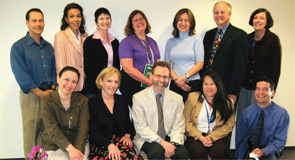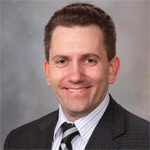He chose the latter. When he made his choice to commit to the regulatory world, Dr. Siegel “went back to school,” taking courses in clinical trial design, biostatistics, and reviewer training to prepare for his role. This would, he believed, allow him to apply those ideas to advising companies about clinical development programs in rheumatology.

Problem Solver and Collaborator
“As part of this new thinking about my career, I thought about what I might be able to do to help out in the field of rheumatology to structure a regulatory framework to ensure that drug companies obtained all the information that clinicians need to have,” Dr. Siegel recalls. Indeed, one of Dr. Siegel’s greatest contributions to rheumatology has been the guidance he has furnished to stakeholders as they develop new therapies in the rheumatic diseases.
One of those stakeholders is Joan T. Merrill, MD, medical director of the Lupus Foundation of America in Washington, D.C.; program chair, Clinical Pharmacology Research Program, Oklahoma Medical Research Foundation in Oklahoma City; and professor of medicine, University of Oklahoma Health Sciences Center. “Jeff is an expert in lupus—an incredibly complicated disease—and has innovative ideas about how to design clinical trials,” says Dr. Merrill. “He can help us see pitfalls and/or the advantages to different kinds of trial designs, and he’s really good at explaining those. He is a great person to have at the FDA.”
Alan Tyndall, MBBS, professor and head, University Department of Rheumatology at Felix Platter-Hospital in Basel, Switzerland, first encountered Dr. Siegel during the planning stages for the Autologous Stem cell Transplantation International Scleroderma (ASTIS) Trial. He recalls that he and co-investigator Jaap van Laar, MD, PhD, (now principal investigator) approached Dr. Siegel, who was supportive of their idea to randomize patients to either stem cell transplant or cyclophosphamide, rendering both arms of the trial potentially active. “Dr. Siegel said that our plan made sense because oncology trials do the same: test one principle against another,” Dr. Tyndall says. “Jeff also alerted us to block randomization, in which patients would be grouped in blocks of two, four, or six randomly allocated to either arm. That was a great support to us, since the traditional randomization might have resulted in a center getting all transplants or all control arm treatments—very demotivating for transplant centers.”
Career Timeline
1980 – Earns MD from Yale University School of Medicine in New Haven, Conn.

